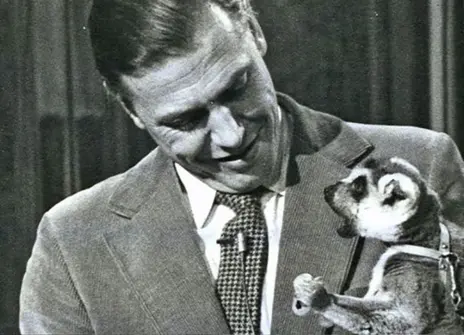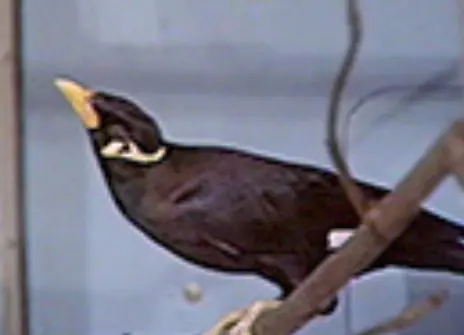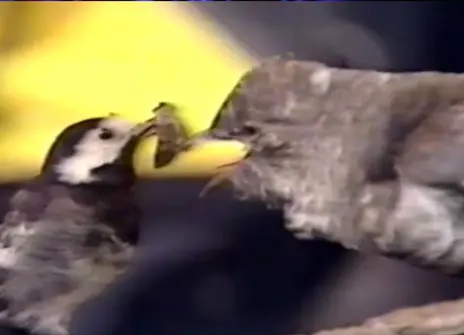Lecture 5 – Foreign languages
In this Lecture, Sir David Attenborough explores how animals communicate with other animals, from different species.
Animals not only have to communicate with their own species, but with animals of different kinds. This sort of communication is necessary when two different species of animal live closely together or come together for a special purpose.
Sometimes, one animal depends on another. The former is known as a ‘parasite’, since it exploits the other animal and uses its own language to deceive it. Alternatively, both animals might benefit from their association. In these cases the two species will come to share a language between them, understood by both.
We ourselves try to communicate with other animals. Usually we do this by teaching animals to understand a language that we have devised and which is really foreign to them, like asking a dog to 'sit'. Perhaps much more interestingly, we sometimes are able to speak to the animal in its own language.
About the 1973 CHRISTMAS LECTURES
Breaking the cardinal rule of broadcast television – ‘never work with animals or children’ – Sir David Attenborough demonstrates the varied means by which animals convey information to one another and reveals a collection of diverse and complicated behaviours.
From visual signals to distinctive scents, the series explores the vast repertoire of animal language as well as the diverse meaning of messages, whether it be attracting a mate or acting as a warning signal.
As David explains, getting the right message across often means the difference between life and death. Parents communicate with their young, infants signal when they’re in distress and specific colours can signal danger. Other animals have also devised clever deceptions, mimicking the warning signals of others without actually possessing a physical threat.
Language is shown to be a universal tool of the animal kingdom but, asks David, how can we learn what animals are saying to each other and how does their language compare to our own? The series concludes by exploring whether it is possible for us to communicate with animals and if we could ever hope to teach an animal to use a human language.
Help us find the missing CHRISTMAS LECTURES
The fourth lecture in the series, 'Simple Signs and Complicated Communications', is considered a missing a lecture, as there is no known copy of it.
If you do have a copy of the recording, we would love it if you got in touch with us at xmaslectures@ri.ac.uk to help us make all our CHRISTMAS LECTURES available for future generations.





